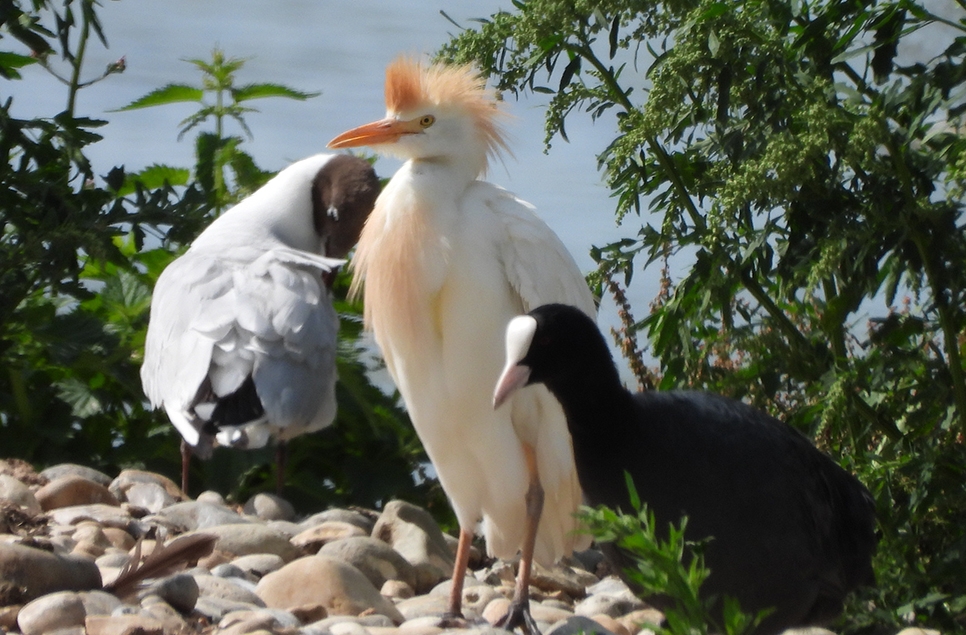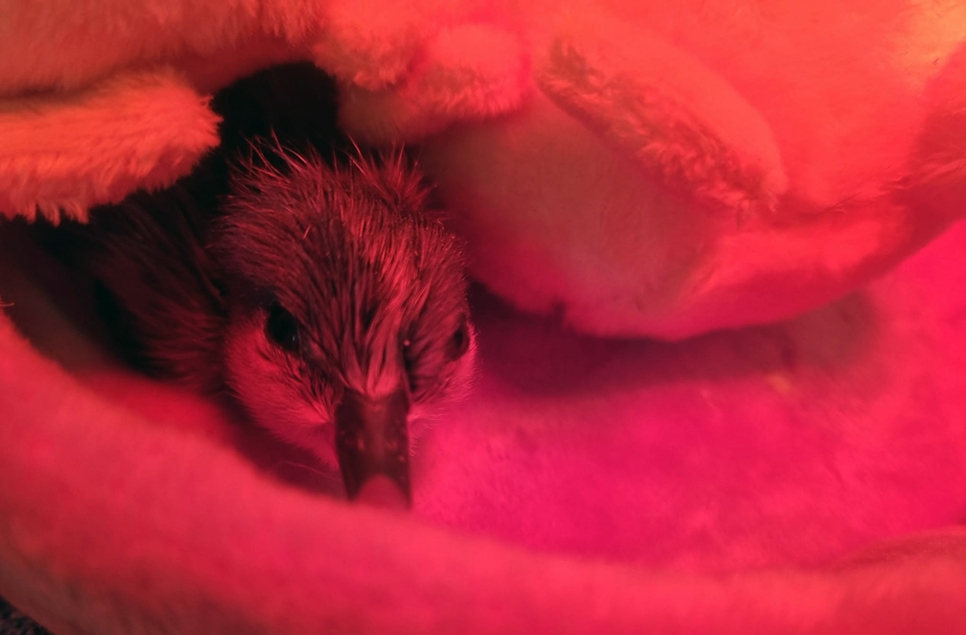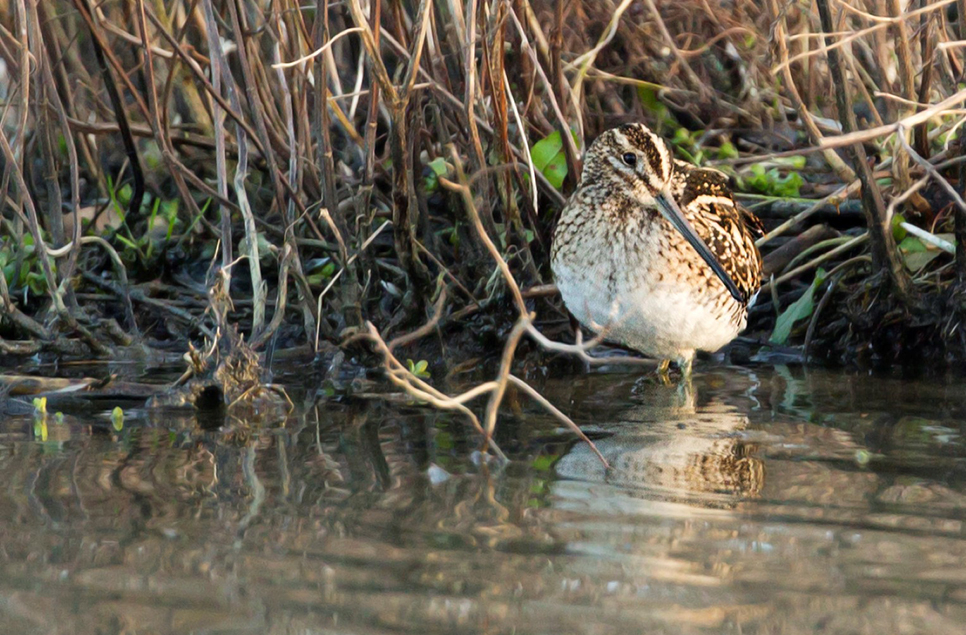August wildlife update
Three juvenile kingfishers were spotted and two were photographed by regular visitor Mike Jerome on Sat 3 August. This is the second brood from the pair that nested in hole #5 in the bank on the Arun Riverlife lagoon this year. These youngsters still have the white tips on their beaks that marks them as fledglings.
Sadly it wasnt a good breeding season for waders. We have been hearing this was the case at several sites. The cold wet spring defeated our lapwings while the two pairs of oystercatchers that nest at Arundel had all their youngsters predated.
White stork flyover
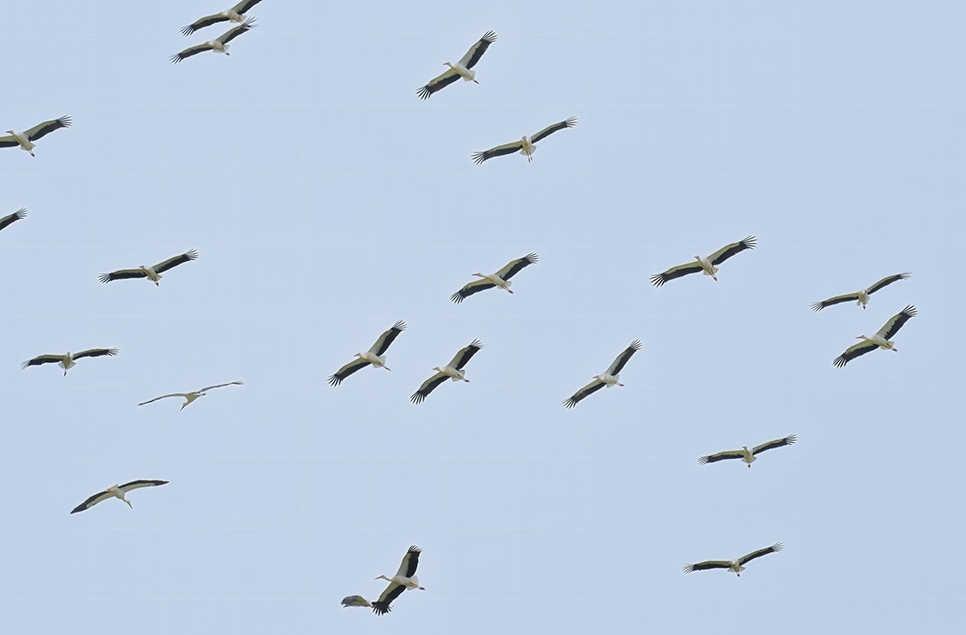
Staff and visitors were thrilled to watch c76 stork flying over the site in a slow whirling flock. There was little flapping as they seemed to be gliding on the thermals. The flock were over the reserve about 20 minutes, first sighted where the Lapwing hide is located, then meandering high overhead before disappearing over the Offham hangar towards Arundel Castle. Photo: Alec Pelling
The White Stork Project posted online that "...the storks from Knepp Wildling and Cotswold Wildlife Park are on the move! Keep an eye on the sky if you are in Sussex."
Other exciting sightings on the reserve last week include a black-tailed godwit seen from the Ramsar hide on 10.08.24 and an osprey flying over the reserve on 11.08.24.
Many moorhens
This August while most ducks have moulted and are in eclipse plummage, the wild moorhens at Arundel just keep on breeding! At least two groups of chicks, with juvenile moorhens acting as babysitters, can be spotted along the Reedbed boardwalk. Check out the water channel behind our outdoor duckery.
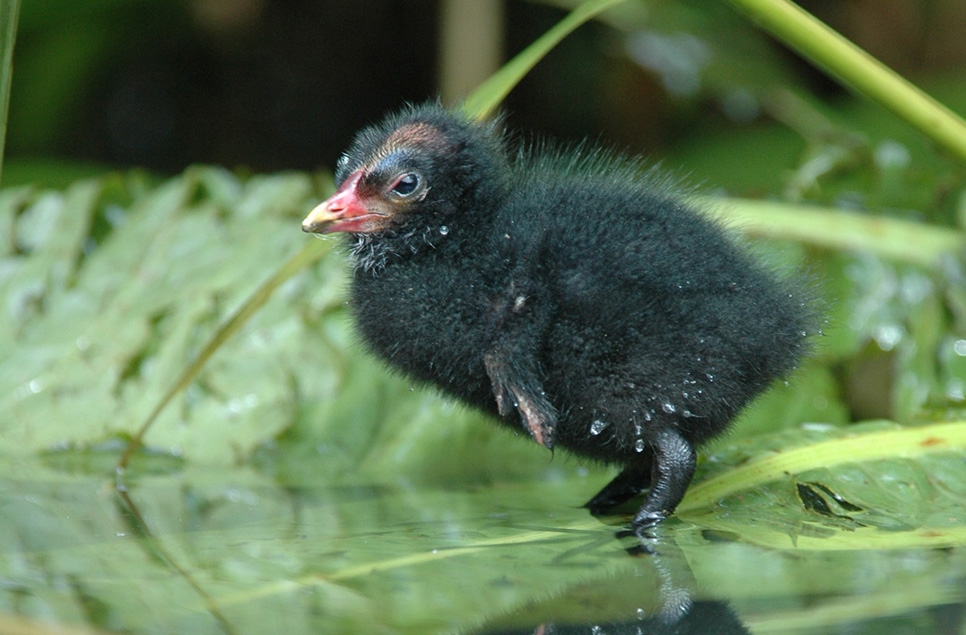
Seeing things or an eagle eye?
Our boat drivers have sworn they have seen a sea eagle do a fly over of the site a few times. They can be hard to ID without binoculars, on their own with nothing to compare them to sizewise.
Sand and house martins
Some sand martins are still inside the nest holes at the Sand martin hides. Reserve Manager Suzi said, "I've still been seeing bunches of three and four fluffy heads poking out, still begging for food. They are teenagers now and should leave home!" The sand martins should be around until the end of August. We expect to get martins from around the country moving through on migration but we didn't see many last year. Perhaps our established colony has put them off?
Exciting news is that one of our regular visitors noticed that house martins have been using the cups at the Sand martin hide. Look for them coming and going on the right arm of the hide, on the nest cups attached attached the the overhang.
Butterflies
Its been a tough year for butterflies as we had our wettest spring since 1986. Butterflies need warm and dry conditions to fly around and to mate. We've definitely have had more of that weather this month! Butterfly numbers are still low but have picked up substantially. We are recording more in our surveys now. Look out for the usual species like large whites, red admirals and speckled woods. We haven't recorded any unusual butterflies so far this month.
Mooving Mowers
Our 6 highland cattle arrive this week to graze our wet grassland this summer. This will please the cattle egrets on site who sometimes sit with the cattle and dine on the flies on their faces. The cattle egrets have been carrying sticks into the trees between Ramsar and Sand martin hides. Could they be nest building? Its a bit late in the year but they still have their orange heads of breeding plumage so who knows?
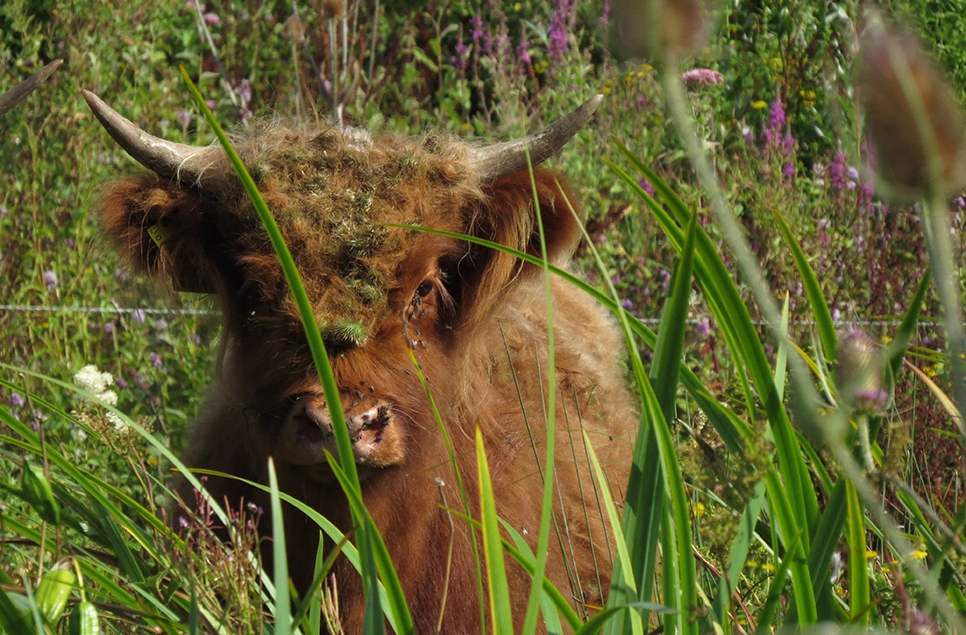
Dragons and Damsels
The dragonflies have been loving the heat this August. Out now onsite are the hawkers: brown, migrant and southern. For the chaser we have plenty of broad bodied chaser but also spotted some 4 spotted and scarce chaser too. Ruddy darters and common darters our out now as well. Both banded and beautiful demoiselles have been showing in the surveys along with plenty of blue-tailed damselflies.
Survey says...
The hot weather make our reptile survey tins a bit too hot for the grass snakes. There is one in the shade where we recorded six snakes and we found six slow worms at the Black Rabbit triangle!
The colony of black-headed gulls have mostly moved on now that their chicks have fledged.
